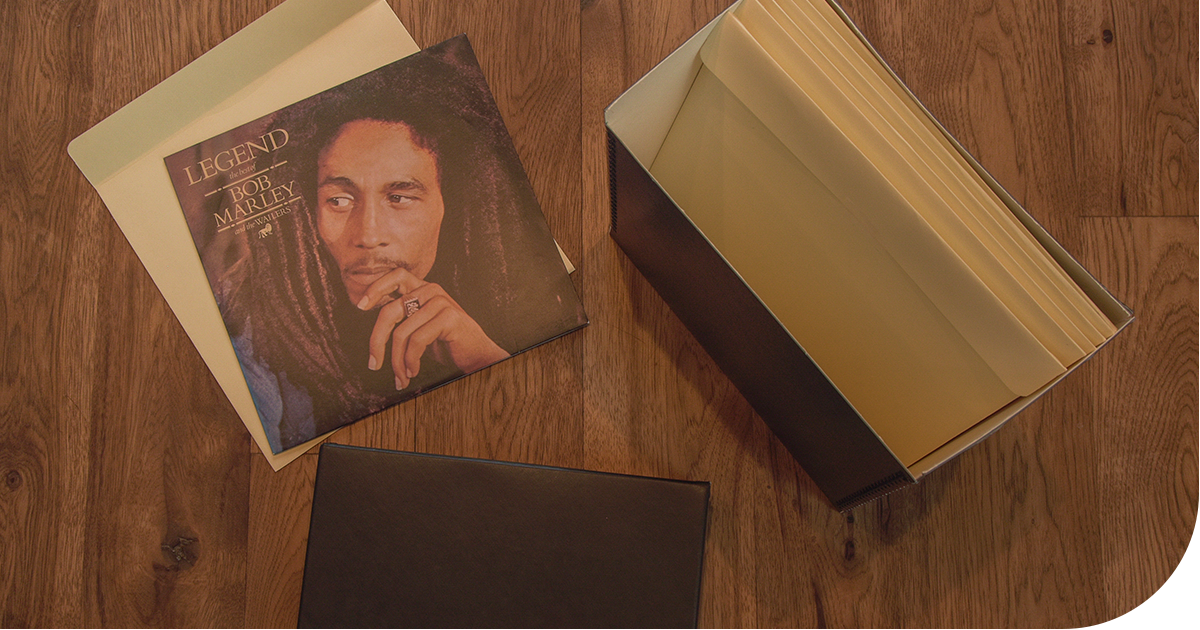Vinyl records have stood the test of time, offering a nostalgic and authentic way to experience music. However, proper archival storage is essential to ensure that these artifacts remain.
Understanding Vinyl Records
Within the preservation community, vinyl records are part of a group called 'grooved media '. These grooved discs, typically made of polyvinyl chloride (PVC), have been in production since the 1950s and are the most common type of record we'll be focusing on. For more information on other intriguing record types like Vulcanite, Berliner, shellac, instantaneous, or acetate discs, check out the links at the end of this post.
Handling & Cleaning
When handling your records, it's crucial to keep your hands clean. Handle them only by the outer edge and areas covered by the label. Avoid touching the grooved surface, as any oils or dirt from your hands can transfer into the grooves, attracting dust. This dust can lead to damage during playback or even mold growth when stored. To be extra cautious, consider using nitrile gloves or finger cots to protect the surface from accidental touches.
It's recommended to clean a record both before and after playback. Cleaning methods can be categorized as dry or wet, differing in their effectiveness for record maintenance. Dry methods typically use a brush to remove dirt and debris, while wet methods involve applying a solution to cleanse the record thoroughly. Numerous products are available for cleaning discs, and consulting with an audiovisual professional is advisable to find the most suitable product for your needs.
Maintaining the condition of your playback equipment is very important in protecting your records from damage. Ensure that all parts of your turntable, especially the stylus or needle, are dust-free to prevent scratching the disc. Only let people handle or play your records if they know how to handle them and your playback equipment properly.
Vinyl records are known to degrade after repeated playback, so preserving the audio content and the physical record is important. There are a variety of analog-to-digital products to help digitize your records.
Storage
Materials
Most records will consist of at least two pieces: the vinyl record and the paper sleeve.
You want to use an archival-quality record sleeve to store the record itself. If your album came with an internal paper sleeve, it's recommended to replace that with an archival-quality sleeve. You can get record sleeves made of plastic or paper. Paper sleeves have the benefit of producing minimal static. Sometimes, the inner sleeve may contain information you want to save; you can place that sleeve in its enclosure and the record in a separate enclosure.
You can choose either a paper or plastic enclosure for the paper sleeve. Paper enclosures will protect the contents from light damage but make it difficult to identify them. Plastic enclosures provide easy identification, but light exposure can still damage the paper sleeve.
If your record is still in the shrink wrap, it's recommended that the shrink wrap be removed for preservation purposes. The wrap can continue shrinking, causing damage to the actual record.
To minimize warping, records should be stored vertically. Store records of the same size together; mixing sizes causes unequal support.
Choose boxes made from acid- and lignin-free materials. Opaque boxes will protect the contents from damage caused by light exposure. If the box is only partially complete, use acid-free tissue to fill the space; you don't want them leaning at an angle.
Environment
Vinyl records should be stored in a clean, dark environment to ensure their preservation. Vinyl is particularly vulnerable to damage from ultraviolet light and heat exposure. Fluctuations in temperature and high humidity levels can foster mold growth and hasten deterioration. Additionally, extreme heat can result in the warping of vinyl records.
Temperatures should remain between 65 and 70°F, and relative humidity (RH) should stay under 50%. Temperature and relative humidity shouldn't fluctuate more than ±10° or ±10% in 24 hours.
For more information
- The Care & Handling of Recorded Sound Materials - Gilles St-Laurent, National Library of Canada
- Care, Handling and Storage of Audio Visual Materials - Library of Congress
- Caring for Audio, Video and Data Recording Media - Joe Iraci, Canadian Conservation Institute
- Sound Savings: Preserving Audio Collections - Association of Research Libraries
- Fundamentals of AV Preservation Chapter 1: Section 2: Grooved Media - Northeast Document Conservation Center (NEDCC)
- Grooved Recordings Condition Assessment Table - U.S. National Archives
- Preservation and Storage of Sound Recordings - Library of Congress










